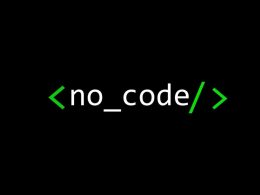If you want to be successful with online marketing and generate sales for your product and/or service, you need to produce an effective landing page. For example, you might have a fantastic offer, and your PPC ads may be fine-tuned to perfection. Yet if your landing page is lacking, you’re going to miss out on a significant number of sales.
After all, the landing page is the final step in convincing someone they should sign up for what you’re offering. Therefore, when you craft a persuasive page and grab your audience’s attention, they will be more compelled to complete that all-important conversion.
If you’re unsure what to include on your landing page, this guide is here to help. Below is how to create a landing page that gets results.
Clean, organized design
As you would expect, the design of your landing page is a vital component for success. You want a page that has the right look, feel, and structure. It shouldn’t be overly busy or confusing for the user. Instead, it needs to be clean and organized, making it as simple as possible for a visitor to understand what you’re offering – and for them to convert.
For an effective design, make sure you utilize eye-catching images and smart use of color. For instance, you want a strong contrast between your background and button color.
Security
When you create a landing page, you’re usually designing it with the intention for it to be the end result after a user clicked on an ad campaign, be that a PPC ad or social media post. This means that there is potential for a lot of people to land on this page.
Furthermore, most landing pages will include a section or form where a user is expected to enter their details, be it a name, address or email. With there being critical data entered into your website, you need to ensure that you have the right security measures in place so that this data isn’t stolen and used for malicious purposes.
One way to improve the security of these landing pages is to add a captcha to the submission process, as this will stop bots from entering data and emails that could have phishing links attached to them. You can also ensure that you build your website on secure HTML, as this will ensure that it’s better protected.
Incorporate keywords
Okay, keyword implementation isn’t exactly going to enrich the viewing experience for users. However, it is essential for attracting organic traffic to your landing page. As a result, it’s important you add the right keywords to your page.
This first starts with a keyword research tool. See what words are hitting the mark in terms of generating search results and not being too competitive. Once you put together a list of keywords, ensure these are incorporated into your landing page copy naturally. Ultimately, you don’t want keyword implementation to lower the viewing experience for your audience.
Trust signals
A high-quality landing page always makes use of trust signals. They highlight your brand and offer are trustworthy, which is more likely to convince visitors to convert. Trust signals take on various forms. With that said, the tried-and-test method is to use testimonials.
If you go the testimonial route, try to use ones that highlight your business in a positive light and are from those that people trust. So, for example, if you have a testimonial from an established brand, this will carry a lot more weight than an anonymous customer.
Does Google consider your website trustworthy or spammy? For most sites, the answer is somewhere in between. Google looks at SEO trust signals to determine how much to value your content. These include positive indicators like domain age and authoritative inbound links. (1/10)
— Trust Signals (@Trust_Signals) August 12, 2020
Keep forms short
You have managed to attract a user to your website. Now it’s only natural you want to collect as many pieces of data about them as you can. Yet if you present a form with multiple fields for them to enter their personal details, they are going to be less inclined to follow through and turn into a conversion.
As a result, keep your forms short and only ask for the essentials. For example, name and email address are two form entries that people are usually fine with providing. Any more than that, however, and your landing page won’t be a success.
Did you enjoy reading this article? Do like our page on Facebook and follow us on Twitter.









